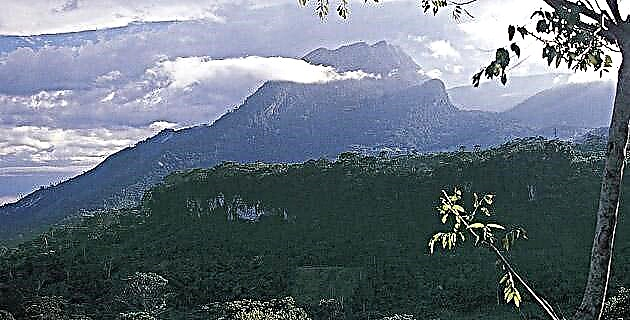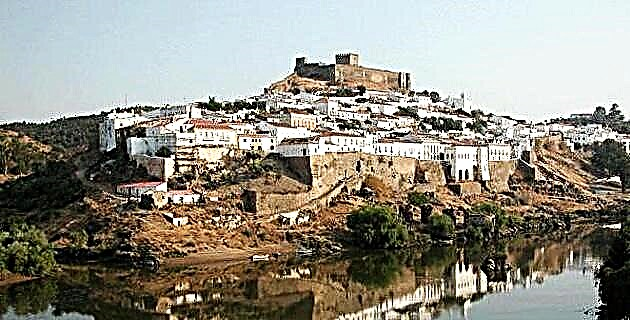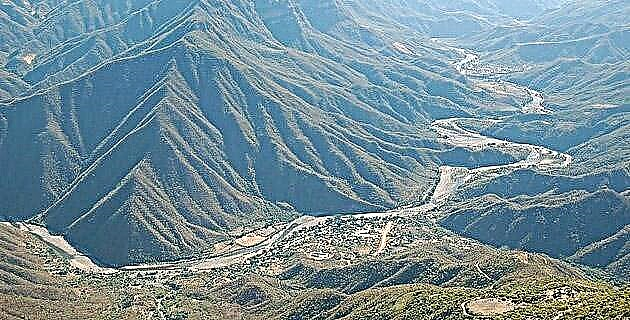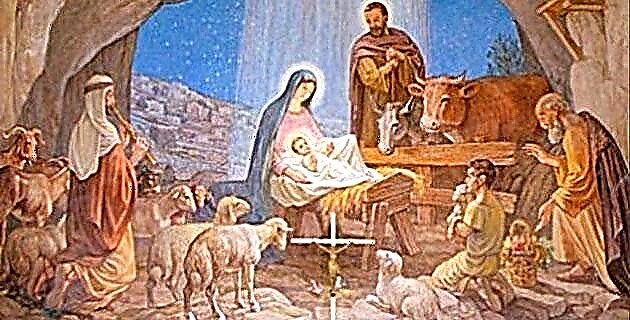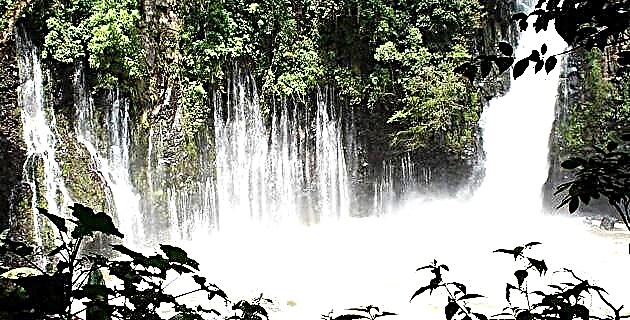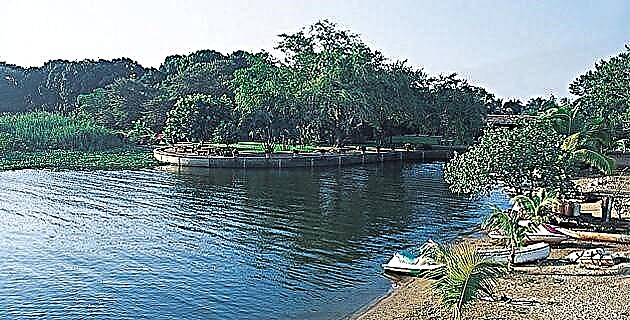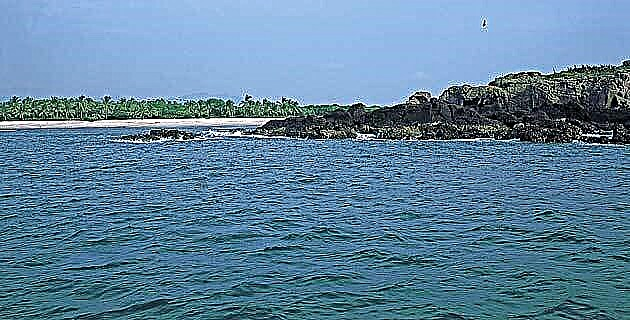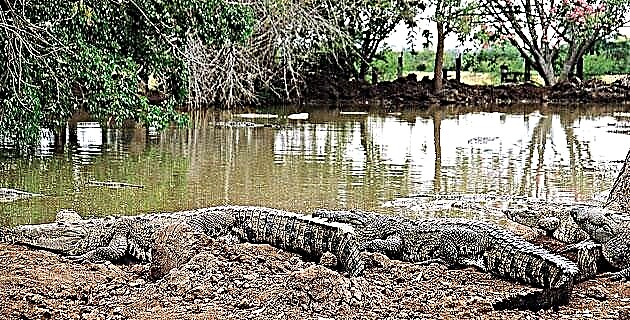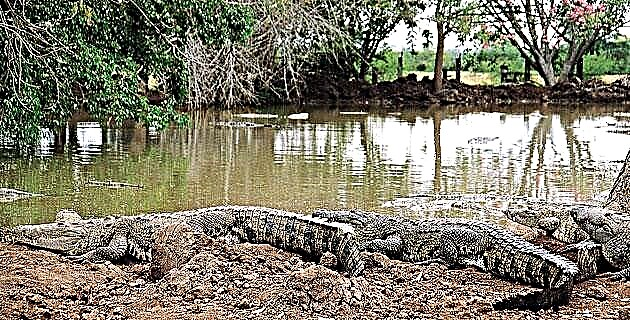
Wherever you see it, this small farm near Culiacán, Sinaloa, is a world turned upside down: it does not produce tomatoes, cereals, or chickens; produces crocodiles; and these crocodiles are not from the Pacific, but Crocodylus moreletii, from the Atlantic coast.
In just four hectares the farm gathers more specimens of this species than all those that live in freedom from Tamaulipas to Guatemala.
But the most surprising thing about the matter is that it is not a scientific station or a conservation camp, but rather a primarily lucrative project, a business: Cocodrilos Mexicanos, S.A. de C.V.
I visited this site looking for explanations to his strange twist. When one hears about a crocodile farm, one imagines a handful of tough men armed with rifles and sleeves, making their way through a dense swamp, while the ferocious animals bite their teeth and slap left and right, just like in the movies. of Tarzan. Nothing of that. What I discovered was something very much like an orderly poultry farm: a rationally distributed space to attend to the various stages of the reptile's life, under the strict control of a dozen peaceful employees.
The farm consists of two main areas: an area with dozens of hatcheries and a few sheds, and a large field with three aquaterrariums, which are large chocolate-colored ponds surrounded by thick groves and a strong cyclonic mesh. With hundreds of heads, backs and tails of crocodiles that look motionless on the surface, they are more reminiscent of the Usumacinta delta than the plains of Sinaloa. The bizarre touch in all this is provided by a speaker system: as crocodiles eat better and live happier when accompanied by a constant sound frequency, they live it listening to the radio ...
Francisco León, Cocomex production manager, introduced me to the corrals. He opened the gates with the same caution as if there had been rabbits inside, and he brought me closer to the reptiles. My first surprise was when, a meter and a half away, it was they, and not us, who ran away. They are actually quite gentle beasts, only showing their jaws when the raw chickens they eat are thrown at them.
Cocomex has a curious history. Even before it there were farms in different parts of the world dedicated to raising crocodiles (and in Mexico, the government was a pioneer in conservation efforts). In 1988, inspired by the farms he saw in Thailand, the Sinaloan architect Carlos Rodarte decided to establish his own in his land, and with Mexican animals. In our country there are three species of crocodiles: the moreletii, exclusive to Mexico, Belize and Guatemala; the Crocodylus acutus, native to the Pacific coast, from Topolobampo to Colombia, and the alligator Crocodylus fuscus, whose habitat extends from Chiapas to the south of the continent. Moreletii represented the best option, since there were more specimens available for breeding, it is less aggressive and it reproduces more easily.
The beginnings were complicated. The ecology authorities - then SEDUE - took a long time to dispel their suspicions that the project was a front for poaching. When they finally said yes, they were awarded 370 reptiles from their farms in Chacahua, Oax., And San Blas, Nay., Which were not particularly robust specimens. "We started with lizards," says Mr. León. They were small and poorly fed ”. The work, however, has paid off: from the first hundred animals born in 1989, they went to 7,300 new offspring in 1999. Today there are about 20,000 scaly-skinned creatures on the farm (of course, excluding iguanas, lizards and intruding snakes). ).
SEX FOR HEAT
The farm is designed to house the Moreletii throughout their life cycle. Such a cycle begins in aquaterrariums (or "breeding ponds") with mating, towards the beginning of spring. In May, the females build the nests. They drag litter and branches to form a cone half a meter high by a meter and a half in diameter. When they finish, they urinate it, so that the humidity accelerates the decomposition of the plant material and generates heat. Two or three days later they lay the eggs. The farm average is forty per clutch. From laying, it takes another 70 days until creatures are born that are hard to believe are crocodiles: they are barely the length of a hand, they are light in color, have a smooth consistency and emit a more subdued cry than that of a chick. On the farm, the eggs are removed from the nest the day after they are laid and taken to an incubator. It is about protecting them from other adult animals, which frequently destroy other people's nests; but it also seeks to control its temperature, although not only to keep the embryos alive.
Unlike mammals, crocodiles lack sex chromosomes. Its sex is determined by a thermolabile gene, that is, a gene whose characteristics are fixed by external heat, between the second and third week of incubation. When the temperature is relatively low, close to 30o C, the animal is born female; when it gets closer to the upper limit of 34o c, it is born male. This condition serves more than just illustrating the anecdotes of wildlife. On the farm, biologists can manipulate the sex of the animals by simply adjusting the knobs on the thermostats, thus producing more breeding females, or more males, which, because they grow faster than the females, offer a surface more skin in less time.
On the first day of birth, the crocodiles are taken to huts that reproduce the dark, warm and humid environment of the caves where they usually grow in the wild. They live there for approximately the first two years of their life. When they reach the age of majority and a length of between 1.20 and 1.50 meters, they leave this kind of dungeon towards a circular pool, which is the very antechamber of hell or glory. Most go to the first: the "trail" of the farm, where they are slaughtered. But a lucky few, at the rate of two females per male, go on to enjoy the paradise of breeding ponds, where they only have to worry about eating, sleeping, multiplying ... and listening to the radio.
REPOPULATING WETLANDS
In our country, the population of Crocodylus moreletii suffered a constant decline throughout the 20th century due to the combined effect of the destruction of its habitat, pollution and poaching. Now there is a paradoxical situation: what some illegal businesses threatened to destroy, other legal businesses promise to save. The species is increasingly moving away from the risk of extinction thanks to projects such as Cocomex. In addition to this and the official hatcheries, new private farms are emerging in other states, such as Tabasco and Chiapas.
The concession granted by the federal government obliges Cocomex to deliver ten percent of the new hatchlings for release into the wild. Compliance with this agreement has been delayed because the areas where moreletii could be released are not controlled. Releasing them in any swamp would only give poachers more game pieces, thereby encouraging the breaking of the ban. The agreement, then, has been aimed at supporting the breeding of acutus. The government transfers some eggs of this other species to Cocomex and the animals hatch and develop alongside their moreletii cousins. After a disciplined childhood and abundant food, they are sent to repopulate formerly crocodilian areas on the Pacific slope.
On the farm they take advantage of the release of the acutus as a didactic event for school visits. On the second day of my stay I accompanied a group of children throughout the event. Two 80-centimeter animals - young enough not to be spoiled by humans - were selected. The children, after their tour of the farm, surrendered to the exotic experience of touching them, not without enough nervousness.
We head to the Chiricahueto lagoon, a body of brackish water about 25 kilometers to the southeast. On the shore, the crocodiles suffered the last groping session by their liberators. The guide untied their snouts, stepped into the quagmire, and released them. The animals stayed still for the first few seconds, and then, without completely submerging, they splashed awkwardly until they reached some reeds, where we lost sight of them.
That incredible event was the corollary of the upside-down world of the farm. For once I was able to contemplate the hopeful spectacle of a profitable and modern company that returned to the natural environment a wealth greater than it took from it.
IF YOU GO TO COCOMEX
The farm is located 15 km southwest of Culiacán, near the highway to Villa Juárez, Sinaloa.
Cocodrilos Mexicanos, S.A. de C.V. receives tourists, school groups, researchers, etc., at any time of the year that is outside the reproductive season (from April 1 to September 20). Visits are on Fridays and Saturdays from 10:00 a.m. at 4:00 p.m. It is an essential requirement to make an appointment, which can be done by phone, fax, mail or in person at the Cocomex offices in Culiacán, where they will give you the pertinent directions to get to the farm.
Source: Unknown Mexico No. 284 / October 2000
Journalist and historian. He is a professor of Geography and History and Historical Journalism at the Faculty of Philosophy and Letters of the National Autonomous University of Mexico, where he tries to spread his delirium through the strange corners that make up this country.

